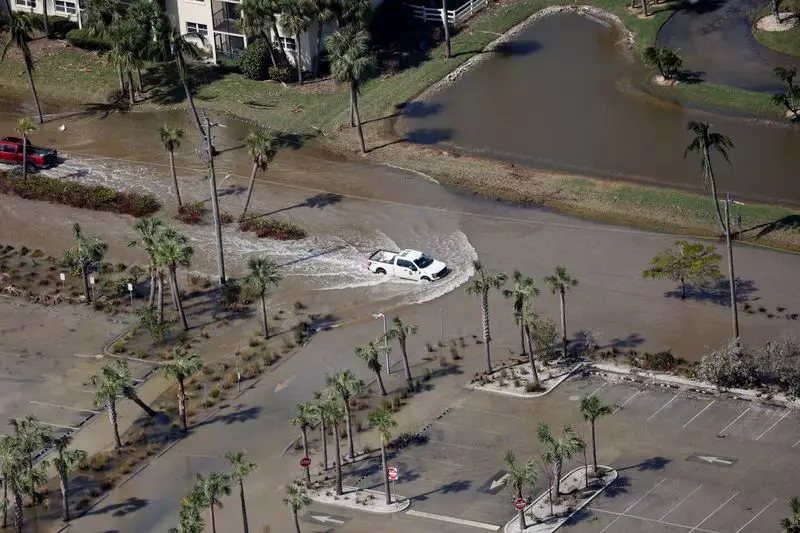In the wake of Hurricane Milton, Florida finds itself grappling with the immediate and profound consequences of a storm that moved swiftly across its landscape, causing destruction yet somehow avoiding the catastrophic surge that emergency officials had braced for. This hurricane, which struck as a Category 3 storm, claimed at least 10 lives, upended the lives of millions, and left an indelible mark on communities already reeling from the recent impacts of Hurricane Helene.
Hurricane Milton wreaked havoc across parts of Florida, but the damages incurred were dampened by a fortunate turn of events: the feared storm surges never materialized in the worst-hit areas. According to Florida Governor Ron DeSantis, the state had narrowly avoided a “worst-case scenario”; however, the damage inflicted was still notable enough to prompt concerns for the affected regions. In central Florida, the aftermath revealed shocking scenes of turned-over trucks and uprooted power lines, clear evidence of the winds and tornadoes that accompanied the hurricane’s passage.
The fury of this storm was visible through the reports of at least 27 tornadoes touching down across the state. In particular, St. Lucie County reported five fatalities, with two victims being residents of senior living communities, emphasizing a grim aspect of how such storms disproportionately impact vulnerable populations. Eyewitness accounts, like that of Crystal Coleman, highlighted the terrifying nature of this disaster, with her family sheltered in their home as they faced the storm’s wrath.
The storm’s impact on infrastructure was staggering, resulting in over 3.2 million clients losing power. This figure represented not just a statistical inconvenience, but a critical disruption to daily life in an already beleaguered area, where some residents were still recovering from previous storm damage and power outages from Hurricane Helene. The enormity of such disarray underscores the challenges faced by utility companies in restoring services amidst the chaos.
As Milton moved northeast, the Tampa Bay area, despite its fears, appeared to dodge the brunt of the anticipated storm surges. However, the devastation to property was still palpable; the fabric roof of Tropicana Field was shredded, demonstrating the extent of the damage to even well-structured buildings. The ballpark, repurposed as a shelter for first responders, indicated a community’s resilience amidst chaos.
Many Floridians faced difficult choices as the storm approached. Some, like Steven Cole Smith, decided against evacuation due to fear of leaving their homes unprotected. Smith described the harrowing experience of the hurricane’s powerful winds as they rattled his house, an experience shared by countless others. Conversely, individuals such as Ken Wood made the prudent decision to heed evacuation orders, illustrating the wide-ranging reactions residents had as they processed the storm’s threat.
The difference in experiences speaks volumes about individual circumstances and the unpredictability of hurricanes. The emotional toll is heavy; residents face the daunting reality of returning to homes they may no longer recognize. The interim period post-storm is often fraught with anxiety about what awaits upon return, as shared by those who bunkered down during the worst of Milton.
Despite the initial destruction, Florida’s officials were cautious about rushing into calamity assessments. With heavy rainfall contributing to flooding fears, the potential for riverbank overflow added an ongoing layer of anxiety. Assessments from authorities indicated that the current water levels remained stable compared to the previous storm, but the unpredictability of nature hung dangerously overhead.
The sheer volume of rain, amounting to 18 inches in some locations, placed communities on alert for potential freshet, and the specter of further evacuations loomed large. Local governance and emergency management professionals understand the fragility of conditions in the aftermath of such storms, crafting strategies to mitigate future risks and enhance community readiness.
As recovery efforts unfold, the ramifications of Hurricane Milton serve as a stark reminder of the unpredictable and devastating power of nature. President Joe Biden’s call for congressional action to allocate disaster relief funds highlights the necessary collaboration across federal and state lines to address the immediate needs of victims and prepare for future events.
The story of Hurricane Milton is more than about destruction; it encapsulates human resilience, community solidarity, and the perpetual struggle against the forces of nature. Each storm offers hard lessons intended for future preparedness as Florida adapts to the reality of a changing climate, ensuring that the spirit of the state’s inhabitants endures in the face of adversity.

